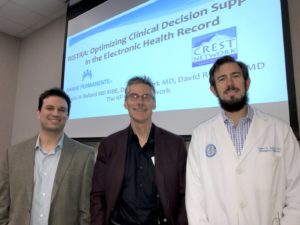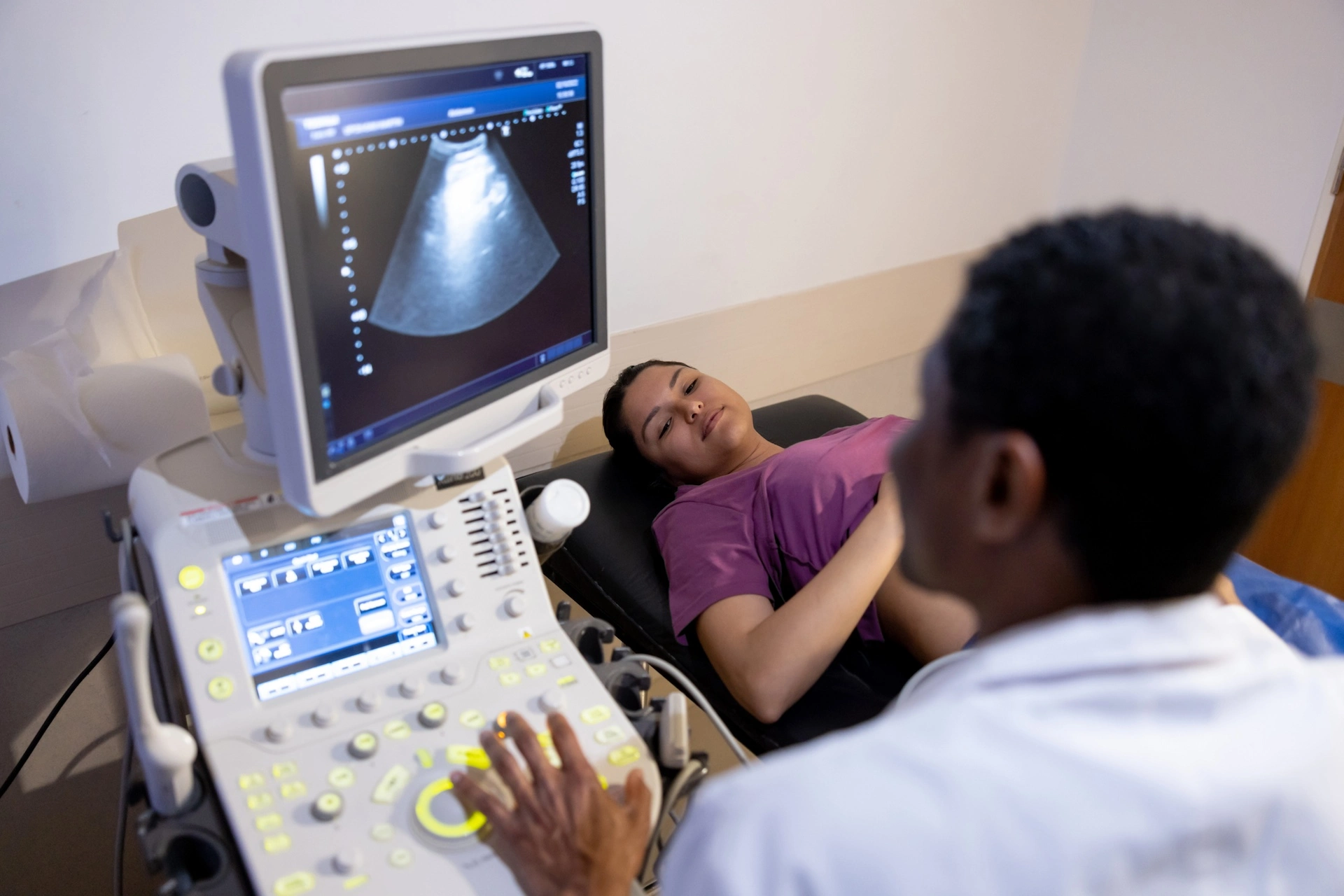Kaiser Permanente analysis suggests CT scans can be safely avoided in low-risk cases
A new Kaiser Permanente study shows high success rates for experienced emergency physicians who use the sum of their clinical expertise to make an initial prediction about whether a child has appendicitis — especially in low-risk cases.
The study, “Diagnostic Performance of Emergency Physician Gestalt for Predicting Acute Appendicitis in Patients Age 5 to 20 Years,” was published online April 2 in the journal Academic Emergency Medicine.

“We show that, for low-risk patients, experienced clinicians can probably trust their gut on whether to order CT scans that expose children to radiation and sometimes give false positives,” said senior author Dustin W. Ballard, MD, MBE, an emergency physician with Kaiser Permanente Northern California and adjunct researcher with the Kaiser Permanente Division of Research.
Putting physician intuition to the test
Emergency physicians often see children with abdominal pain that may be a sign of appendicitis. This potentially life-threatening inflammation of the appendix requires prompt treatment, but the CT and ultrasound scans needed to confirm it are costly, and CT scans expose patients to radiation.
“Physicians can use clinical clues to calculate risk scores that help them decide whether to order scans,” said first author Laura E. Simon, a former Kaiser Permanente research assistant who is now studying medicine at the University of California, San Diego. “But some scores may be overly conservative and prompt unnecessary scans.”
Simon, Ballard, and colleagues wondered how accurately emergency physicians could predict whether a child has appendicitis based purely on clinical intuition arising from the overall synthesis of their experience and expertise — known as “physician gestalt.”
They asked physicians at 11 Kaiser Permanente Northern California emergency departments to predict the likelihood of appendicitis whenever they encountered a patient aged 5 to 20 years who had suggestive symptoms. Risk predictions ranged from 1% to 100% and were noted before any scans were ordered.
The final analysis included 3,426 patients. Among those initially predicted to be at very low risk for appendicitis (1% to 10%), 1.1% ended up with a confirmed diagnosis of appendicitis, demonstrating high accuracy of the initial predictions.
However, physicians appeared to overestimate the likelihood of appendicitis for higher predicted-risk ranges: among patients in the 11%-to-49% predicted risk range, 7.6% had confirmed appendicitis. Meanwhile, 26.9% had appendicitis in the 50%-to-89% risk range, and 48.5% in the 90%-to-100% range.
Physicians who had graduated from medical school 5 or more years before the study tended to make more accurate predictions than less-experienced physicians.
“All in all, our findings suggest that, in low-risk cases, experienced clinicians can follow their intuition and simply have a conversation with the patient about what to look out for,” Ballard said. “But in intermediate-risk cases, physician gestalt is not good enough on its own.”
Improving a risk calculation tool
This study arose from a larger-scale evaluation of a recently developed tool that uses clinical factors to calculate appendicitis risk: the pediatric Appendicitis Risk Calculator (pARC).
pARC was developed by researchers from HealthPartners Institute and Children’s Minnesota, led by Anupam B. Kharbanda, MD, MSc, of Children’s Hospitals and Clinics of Minnesota and Elyse O. Kharbanda, MD, MPH, of HealthPartners Institute in Bloomington, Minnesota. It was further collaboratively studied by Ballard and other researchers from Kaiser Permanente’s Clinical Research on Emergency Services and Treatments (CREST) Network. pARC has previously shown improved performance over other risk prediction tools.
“We have now updated the pARC tool in KP HealthConnect based on our new understanding of the strengths and weaknesses of physician gestalt in various risk categories,” Ballard said. A new analysis of the updated pARC tool will be reported this year.
pARC is one of several clinical decision support tools deployed and studied by CREST in an effort to address conditions that are often seen in emergency departments, but which are challenging to manage. CREST has also implemented tools for evaluating chest pain, pulmonary embolism, and other conditions.
“In the process of developing clinical decision support tools, we have found that it is important to evaluate and incorporate physician gestalt,” Ballard said. “That’s become a key guiding principle for us.”
The new study was funded by the National Institute of Child Health and Human Development.
In addition to Ballard and Simon, co-authors on the study included: E. Margaret Warton, MPH, Adina S. Rauchwerger, MPH, and Mary E. Reed, DrPH, of the Division of Research; Mamata V. Kene, MD, MPH , David R. Vinson, MD, Uli K. Chettipally, MD, MPH, Dustin G. Mark, MD, D. Ian McLachlan, MD, MPH, Dana R. Sax, MD, MPH, Dale M. Cotton, MD, and James S. Lin, MD, of The Permanente Medical Group (Vinson and Mark have adjunct appointments at the Division of Research); and Gabriela Vazquez-Benitez, PhD, of HealthPartners Institute in Bloomington, Minnesota.
# # #





This Post Has 0 Comments